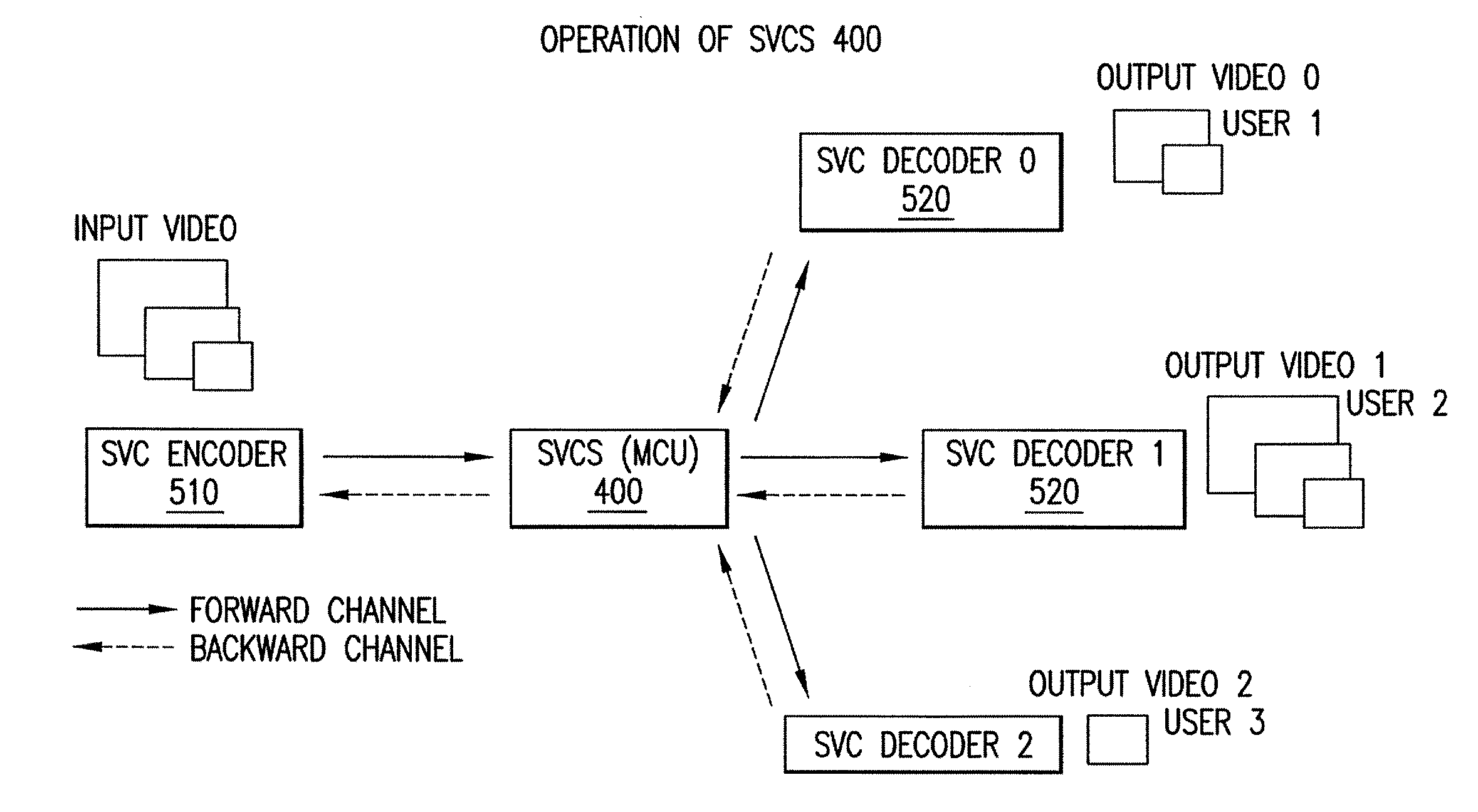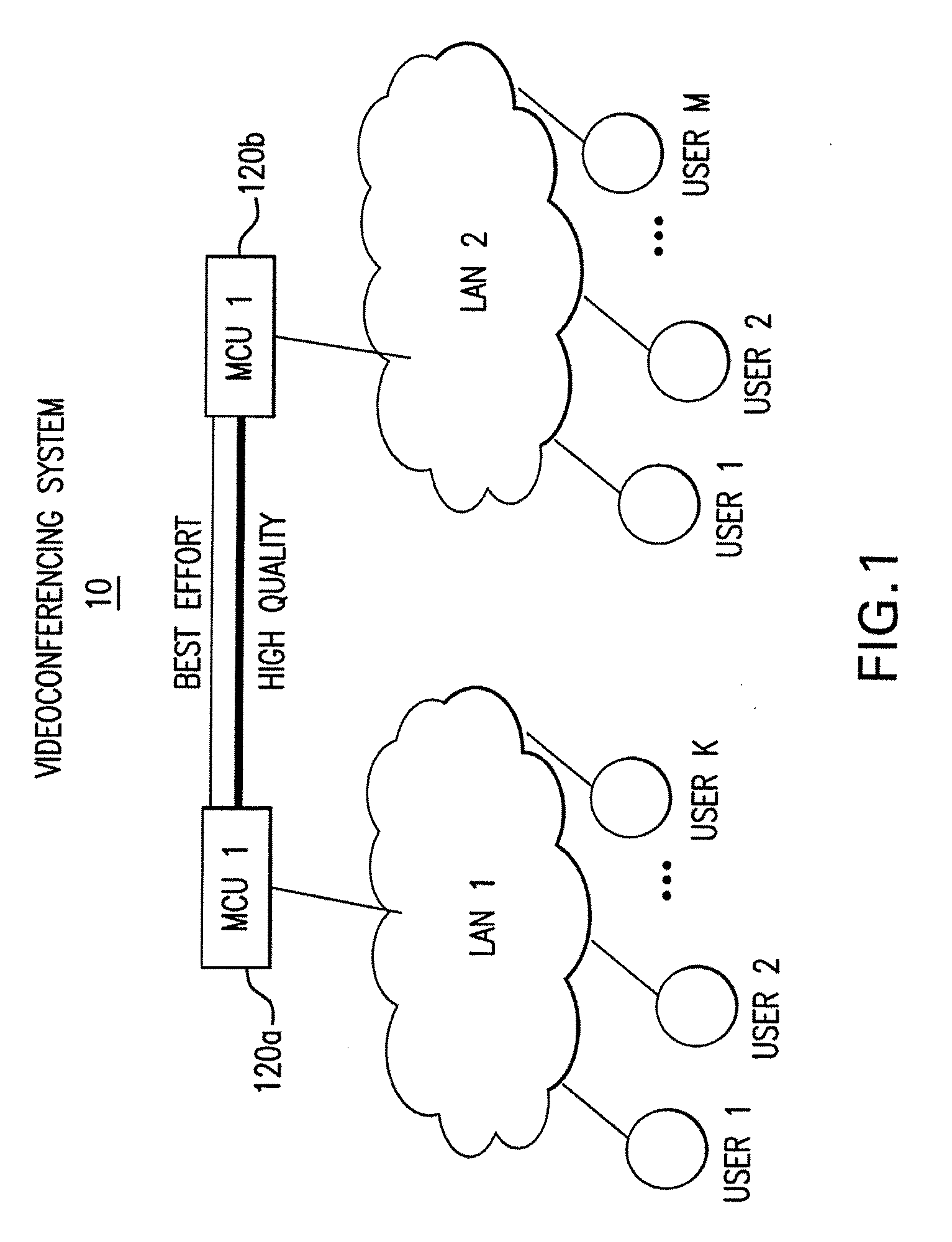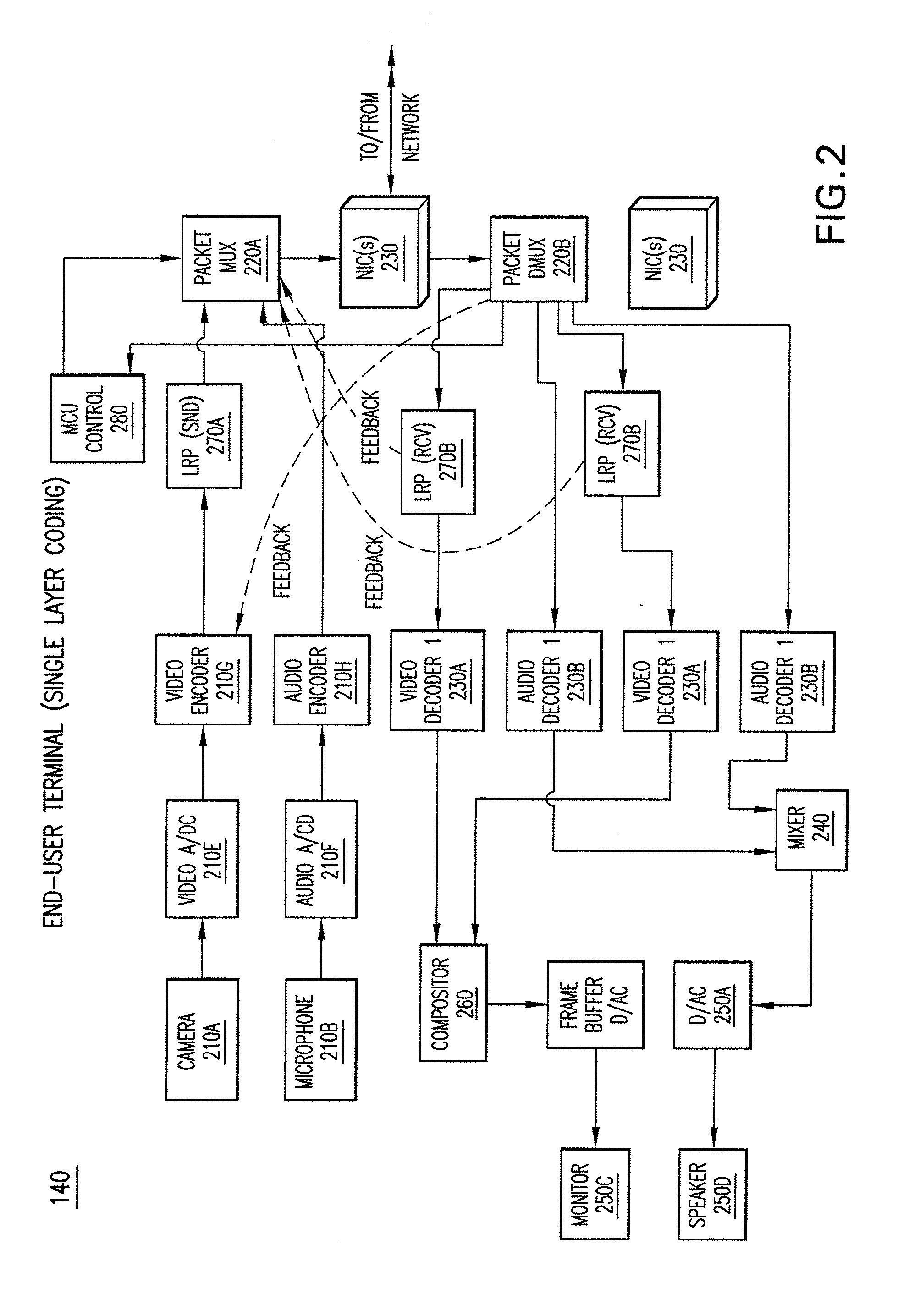Systems and methods for error resilience in video communication systems
- Summary
- Abstract
- Description
- Claims
- Application Information
AI Technical Summary
Benefits of technology
Problems solved by technology
Method used
Image
Examples
Embodiment Construction
[0040]The present invention provides systems and methods for error resilient transmission in video communication systems. The mechanisms are compatible with scalable video coding techniques as well as single-layer and simulcast video coding with temporal scalability, which may be used in video communication systems.
[0041]The system and methods involve designating a set of video frames or pictures in a video signal transmission for reliable or guaranteed delivery to receivers. Reliable delivery of the designated set video frames may be accomplished by using secure or high reliability links, or by retransmission techniques. The reliably-delivered video frames are used as reference pictures for resynchronization of receivers with the transmitted video signal after error incidence or for random access.
[0042]In a preferred embodiment, an exemplary video communication system may be a multi-point videoconferencing system 10 operated over a packet-based network. (See e.g., FIG. 1). Multi-po...
PUM
 Login to View More
Login to View More Abstract
Description
Claims
Application Information
 Login to View More
Login to View More - R&D
- Intellectual Property
- Life Sciences
- Materials
- Tech Scout
- Unparalleled Data Quality
- Higher Quality Content
- 60% Fewer Hallucinations
Browse by: Latest US Patents, China's latest patents, Technical Efficacy Thesaurus, Application Domain, Technology Topic, Popular Technical Reports.
© 2025 PatSnap. All rights reserved.Legal|Privacy policy|Modern Slavery Act Transparency Statement|Sitemap|About US| Contact US: help@patsnap.com



